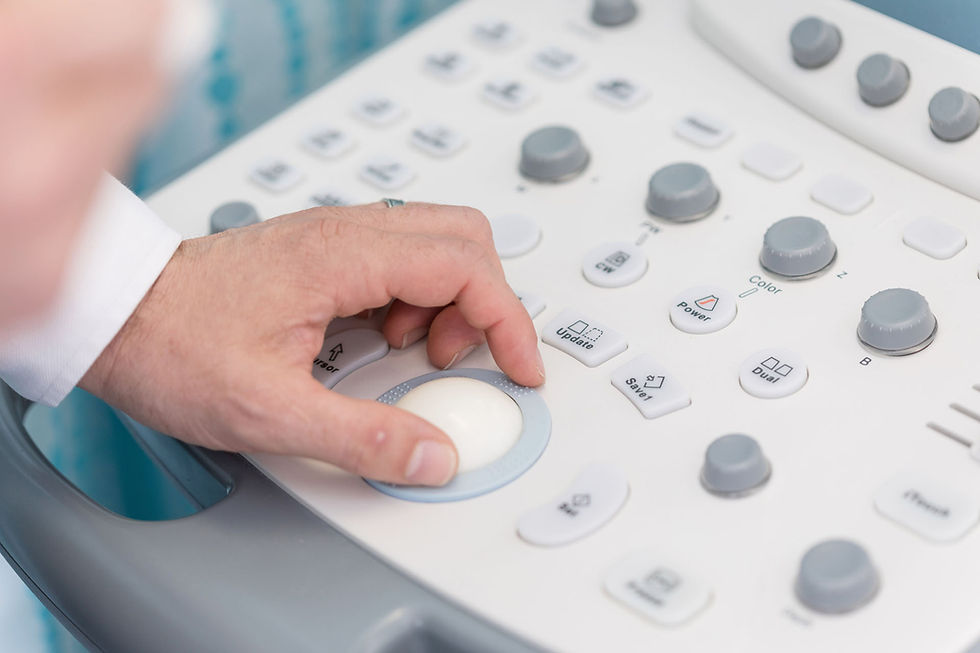First Trimester Anatomy Scan: More than a Nuchal
- aaron10261
- Jul 19
- 3 min read

Pregnancy is filled with important milestones, and one of the earliest—and most comprehensive—scans now available is the first trimester anatomy ultrasound. Typically performed between 12+5 and 14 weeks gestation, this advanced imaging offers much more than just a glimpse of your baby. It provides early insights into fetal anatomy, growth, and development, while also screening for maternal health conditions like pre-eclampsia. But how does this scan compare with more familiar first trimester tests such as NIPT (Non-Invasive Prenatal Testing) and the Nuchal Translucency (NT) ultrasound?
Let’s explore what sets the first trimester anatomy scan apart, and why it’s becoming an increasingly valued part of early pregnancy care.
How is the First Trimester Anatomy Ultrasound Different?
NIPT is a blood test that analyses fetal DNA fragments in the mother’s blood to screen for common chromosomal conditions such as Down syndrome, trisomy 13, and trisomy 18. It is highly accurate but provides no structural or anatomical information about the fetus.
Nuchal Translucency (NT) ultrasound, typically performed between 11 and 13+6 weeks, measures the clear space at the back of the baby’s neck. This measurement, combined with maternal blood tests, can assess the risk of chromosomal abnormalities. However, the NT scan is a limited structural assessment.
In contrast, the first trimester anatomy ultrasound is a detailed, systematic scan of the developing fetus and maternal structures. Using high-resolution transabdominal and transvaginal imaging, it visualises early fetal anatomy in remarkable detail—well before the traditional mid-trimester morphology scan.
What Fetal Anatomy Can Be Seen?
Thanks to technological advances in ultrasound, a thorough first trimester anatomy scan can now assess:
Head and brain: Including early brain structures such as the choroid plexus and midline falx
Face: Identification of the nasal bone, profile, and orbits
Neck and spine: Early evaluation of spinal integrity and neck fluid
Heart: Presence, position, and four-chamber view; early rhythm assessment
Chest and lungs: Preliminary development checks
Abdomen: Stomach, bladder, umbilical cord insertion, and early abdominal wall
Limbs: Counting arms, legs, hands, and feet
Genitalia: While not always conclusive, early gender suggestion may be possible
While not all anomalies can be diagnosed this early, some major structural issues—such as anencephaly, acrania, large abdominal wall defects, or severe limb abnormalities—can be detected. This allows parents more time to process information, seek further testing, or plan ongoing care.
Maternal Benefits: More Than Just Baby
The first trimester anatomy ultrasound doesn’t just benefit the baby—it also screens for potential maternal complications. Most notably, it includes pre-eclampsia screening through the combined assessment of maternal blood pressure, uterine artery Dopplers, and maternal history.
Pre-eclampsia is a serious pregnancy complication that can affect both mother and baby, typically developing later in pregnancy. Early screening allows for timely intervention, such as low-dose aspirin therapy, which can significantly reduce the risk and severity of disease.
Additionally, the scan assesses the uterus, ovaries, and cervix—providing information about fibroids, ovarian cysts, or an unusually short cervix, which may influence pregnancy care.
A Valuable Addition to Early Pregnancy Care
When performed by experienced sonographers or maternal-fetal medicine specialists, the first trimester anatomy ultrasound offers both reassurance and critical insight. It complements NIPT and NT testing by providing anatomical and maternal information that blood tests alone cannot.
As access to specialised women’s imaging grows, more parents are embracing the benefits of this detailed early scan. Whether for peace of mind, early diagnosis, or informed decision-making, the first trimester anatomy ultrasound is a valuable step in modern prenatal care.
If you're pregnant and curious about early fetal development, speak to your healthcare provider about booking a first trimester anatomy scan—it might just be the most insightful look you’ll have at your baby’s very first chapter.






Comments